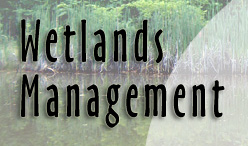|
|
|
|
|
|
Wetland types |
|
Salt marshes |
|
Functions and values |
page 5 of 7 |
Tidal marshes serve many important functions. They buffer
stormy seas, slow shoreline erosion, and are able to absorb
excess nutrients before they reach the oceans and estuaries.
Tidal marshes also provide vital food and habitat for clams,
crabs, and juvenile fish, as well as offering shelter and
nesting sites for several species of migratory waterfowl.
Marshes recharge groundwater supplies and moderate stream
flow by providing water to streams. This is an especially
important function during periods of drought. The presence
of marshes in a watershed helps to reduce damage caused by
floods by slowing and storing flood water. As water moves
slowly through a marsh, sediment and other pollutants settle
to the substrate, or floor of the marsh. Marsh vegetation
and microorganisms also use excess nutrients for growth that
can otherwise pollute surface water such as nitrogen and
phosphorus from fertilizer. |
|

